By Aaron Hallmark • August 14, 2024
“AI is the new electricity.” — Andrew Ng
AI is changing our world faster than any technology since electricity. Want to know why? Just look at ChatGPT, the transformer-based AI model revolutionizing how we work, learn, and connect. The lightbulb, as the first widespread application of electricity, extended working hours, improved education access, and connected people globally. Today, ChatGPT is similarly enhancing productivity, expanding access to technology and education, and fostering global integration.
If AI is the new electricity, then ChatGPT is the new lightbulb.
The Times They Are A-Changin’
Let me clarify something: I’m using “ChatGPT” like we use “Kleenex” for tissues or “Google” for any internet search. It’s shorthand for a broader category of generative, pre-trained, transformer-based large language models (LLMs) with easy-to-use chat interfaces. While OpenAI’s ChatGPT might be the most popular, others like Anthropic’s Claude, Mistral’s Le Chat, and Google’s Gemini are also shaping this category.
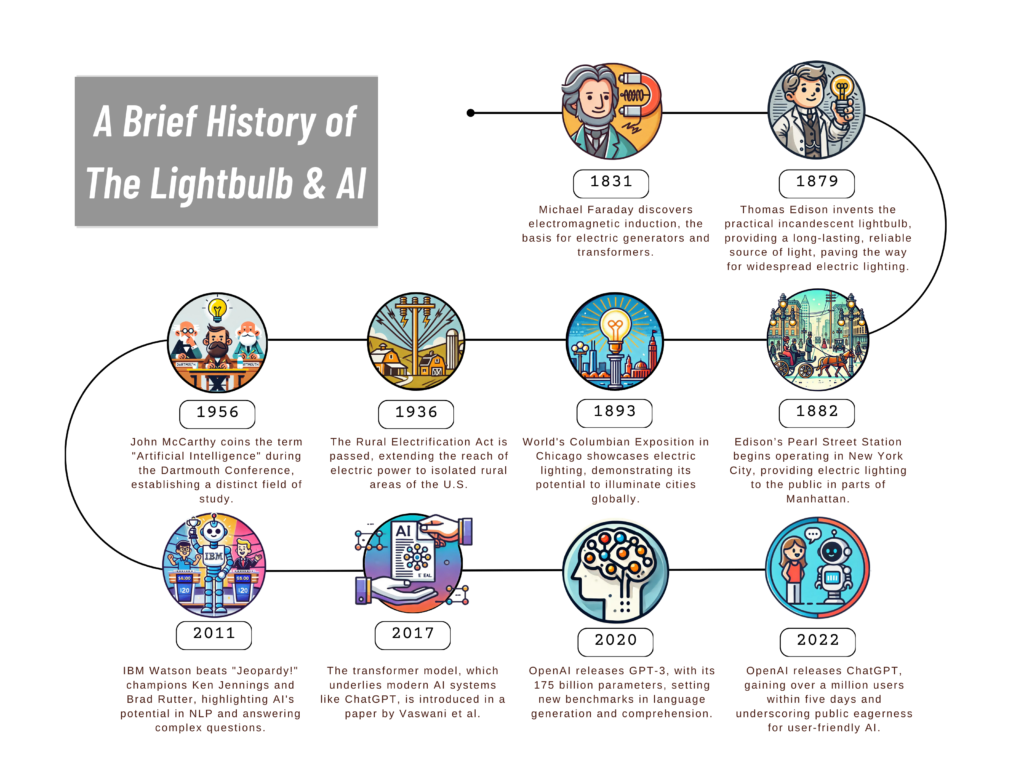
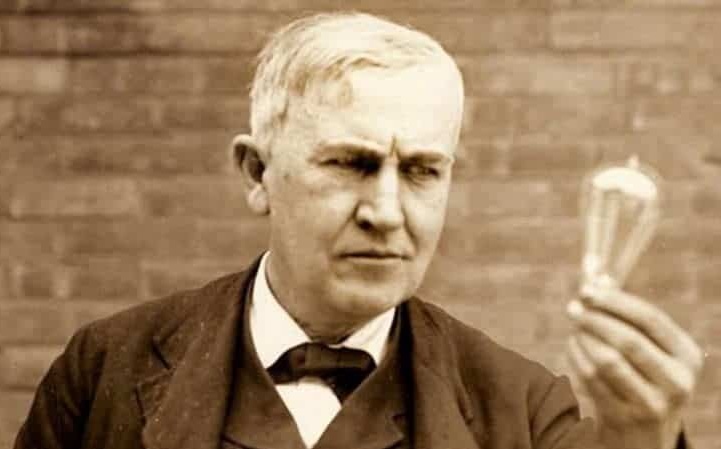
My own lightbulb moment with these models came when I returned to Stanford in mid-2020 to refresh my AI skills at the start of COVID. I had studied AI at Stanford under John McCarthy, the father of AI, years earlier. But it was during the pandemic that I truly saw the potential of these models. More than two years before the release of ChatGPT, I recognized their potential to revolutionize enterprise integration. So I founded FAIT to harness this potential.
Working 9 to 5
More broadly, LLMs like ChatGPT enhance productivity in a way reminiscent of the lightbulb. Edison first introduced the lightbulb in 1879. Its application extended the working day beyond sunset, providing brighter, safer, and more reliable illumination than gas lights. This allowed businesses to operate more flexibly. Today, companies in the e-commerce space, including Shopify and many others, have harnessed ChatGPT to handle customer queries 24/7, automating processes that were previously manual and time-consuming. The results vary, and some tasks may still require human oversight. Still, this shift is leading toward notable efficiency gains, such as reduced response times and increased customer satisfaction. These changes are transforming how businesses operate across various industries.
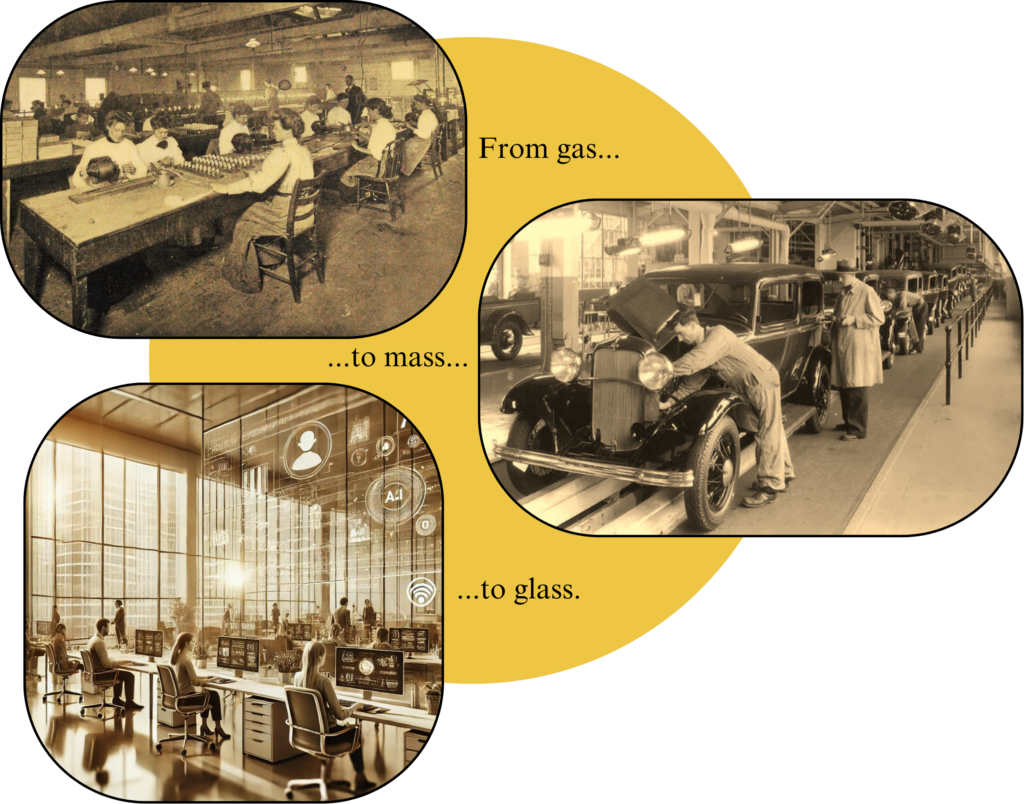
“True productivity gains come from doing more in less time. This is where LLMs like ChatGPT truly shine.”
While extending work hours increases output, true productivity gains come from doing more in less time. This is where LLMs like ChatGPT truly shine. They automate repetitive tasks, like summarizing datasets, creating draft reports, or generating code, allowing employees to focus on higher-value activities. For instance, Microsoft’s Copilot AI has reduced the time spent on repetitive tasks by 20%, enabling employees to dedicate more time to strategic initiatives. Similarly, ServiceNow’s AI-powered Now Assist platform has achieved nearly a 20% case avoidance rate. These enhancements are akin to how Henry Ford’s assembly line, powered by electric lighting, revolutionized factory work by extending working hours safely, improving precision, and reducing accidents. Prior gas lighting posed significant fire hazards and provided uneven illumination. But electric lights created a safer, more efficient environment, enabling workers to produce more consistent and higher-quality output.
You Light Up My Life
Beyond business productivity, both ChatGPT and the lightbulb have transformed how we personally access and engage with technology and education. The lightbulb was so simple to use that it became a staple in every household. By 1905, electric lighting was common in urban homes. Initiatives like the Rural Electrification Act of 1936 brought it to rural areas, making nighttime activities accessible to all. And, just as easily as flicking a light switch, ChatGPT’s intuitive interface makes advanced AI accessible to anyone with an internet connection.
Moreover, the lightbulb enabled students to study after dark, broadening educational opportunities. Before widespread electric lighting, rural children often studied by the dim light of oil lamps or candles. The Rural Electrification Act brought electric light to these homes, revolutionizing how families engaged in evening activities, particularly education.
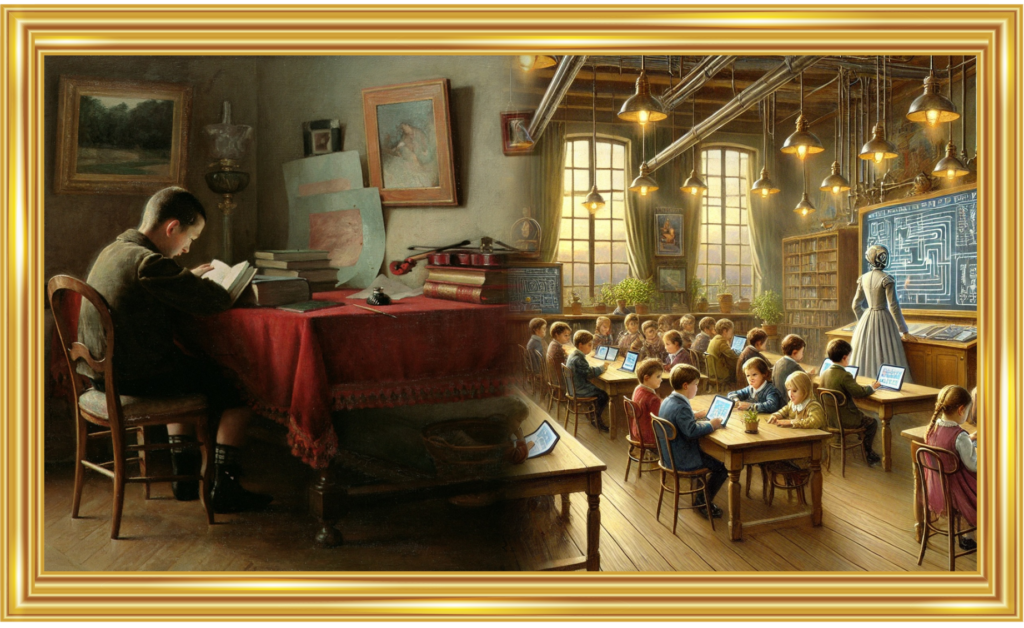
Teach Your Children
AI-driven tools continue this legacy by providing personalized learning experiences that significantly improve student performance. Research conducted by Utah State University demonstrated a 13.5% improvement in Mathematics Placement Exam scores among high school students using the ALEKS AI tutoring system versus those who did not use the system. This improvement reflects more effective learning and a reduction in the need for remedial courses.
“The integration of AI with human expertise creates a more dynamic and effective educational environment.”
Building on the established utility of AI, a study by Stanford University and Carnegie Mellon University further showed that combining AI tools with human-assisted tutoring boosts performance even more. Students using hybrid human-AI tutoring systems achieved up to a 17% increase in skill proficiency per week. This demonstrated that the integration of AI with human expertise creates a more dynamic and effective educational environment. Much like the electric light before it, AI has the potential to transform education by making advanced learning tools accessible and effective for a wide range of students.
We Are the World
Another striking parallel is how both technologies facilitate global integration. Electricity spread rapidly from Edison’s Pearl Street Station to over 500 cities within a decade. ChatGPT’s global adoption has been even faster. It reached over 1 million users within five days of its launch in November 2022. Within two months of its launch, the user base soared to over 100 million. This rapid spread laid the groundwork for both technologies to make transformative societal changes.
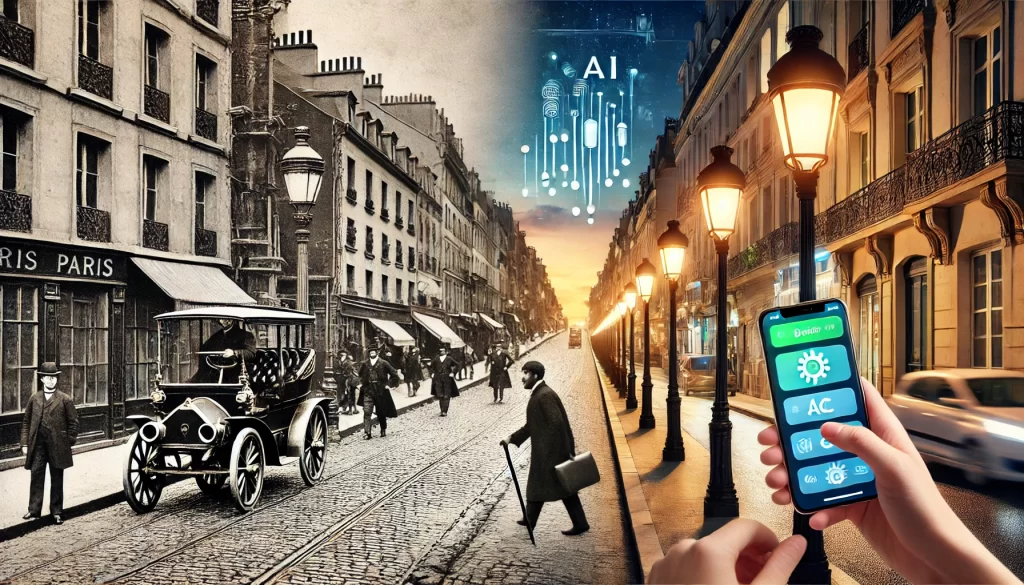
I Can See Clearly Now
“Whether it’s theatergoers, café patrons, or diplomats, people are using AI to interact in new ways, breaking down global barriers that once seemed insurmountable.”
For example, before street lighting, Paris was infamous for its dark and dangerous streets. Its high crime rates made it unsafe to walk at night. The introduction of gas street lighting in the early 19th century began to transform it into the “City of Light.” Later, the adoption of electric street lighting further solidified Paris’s reputation, making it even safer and more navigable. Similarly, ChatGPT clears the fog of information overload, with AI translation tools having significantly improved travel experiences. These tools help travelers, students, and international businesspeople navigate airports, understand menus, and seek medical assistance. As a result, international travel can become more accessible and safe.
Electric light transformed social dynamics, enabling evening cultural events worldwide. While gas lighting had already extended the possibility of nighttime activities, it came with significant drawbacks. These included the risk of gas leaks, explosions, and heat emissions, which made environments uncomfortable and dangerous. The introduction of electric lighting, however, revolutionized this aspect by providing a safer, more reliable, and easily controllable source of illumination. Theaters, cafes, and drawing rooms, once dim and shadowed, became vibrant centers of intellectual exchange and social interaction, bringing people together in new ways.

Everybody Wants to Rule the World
Similarly, ChatGPT enhances cross-cultural communication by providing accurate translations and cultural context, aiding in various domains, including:
- International Diplomacy: AI models like ChatGPT have been used by diplomats to prepare for negotiations, analyze international media coverage, and even automate consular services. These tools help diplomats tailor their messages to different cultural contexts and understand how their countries are portrayed globally. That said, they also carry risks of misinformation and data privacy issues, if not carefully managed.
- Global Customer Service: Companies like Microsoft and ServiceNow have successfully leveraged AI to offer real-time translations and context-aware responses in customer service. This capability has significantly improved customer satisfaction by breaking down language barriers and providing efficient, culturally appropriate assistance to a global audience.
- International Marketing: AI-driven tools have been employed to craft culturally appropriate marketing content, ensuring that campaigns resonate with diverse audiences worldwide. This approach has led to improved engagement and brand perception across different cultural contexts.
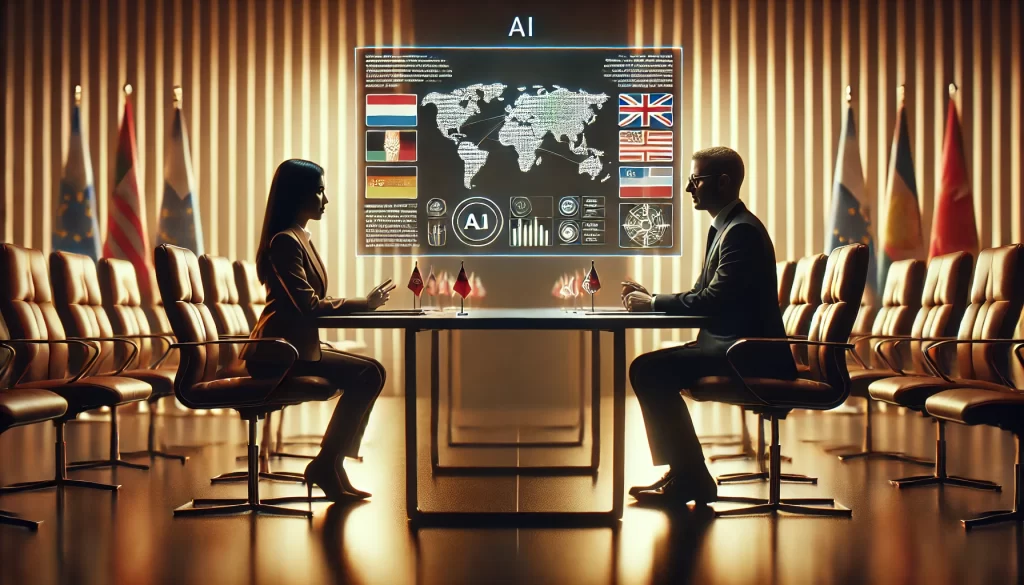
Whether it’s theatergoers, café patrons, or diplomats, people are using AI to interact in new ways, breaking down global barriers that once seemed insurmountable.
But not without significant challenges. Like the electric light, which increased energy consumption with its widespread adoption, AI models like ChatGPT require significant computational power. This leads to substantial carbon emissions. While these environmental impacts are concerning, advancements in energy-efficient algorithms and renewable energy for data centers offer promising solutions. These solutions are similar to how efficiency improvements have helped to mitigate some of the environmental costs of electric lighting.
Don’t Stop Me Now
“Like any powerful technology, we must navigate AI’s implementation thoughtfully.”
As we move into this new era, AI, led by ChatGPT and other transformative models, is reshaping our world, much like the electric revolution once did. Just as the lightbulb extended our days, improved productivity, and made education more accessible, these models are making technology and knowledge widely available, fostering global connections, and driving real productivity gains. And like any powerful technology, we must navigate its implementation thoughtfully, ensuring its light reaches all corners of society equitably. Much like the Rural Electrification Act brought the benefits of electricity to underserved areas, we must strive to make AI’s illuminating power accessible to all.
Whether you’re an inventor, a student, a theatregoer, or a businessperson revolutionizing enterprise integration – if AI is the new electricity, then ChatGPT is undeniably the new lightbulb, lighting our way forward in the digital age.

